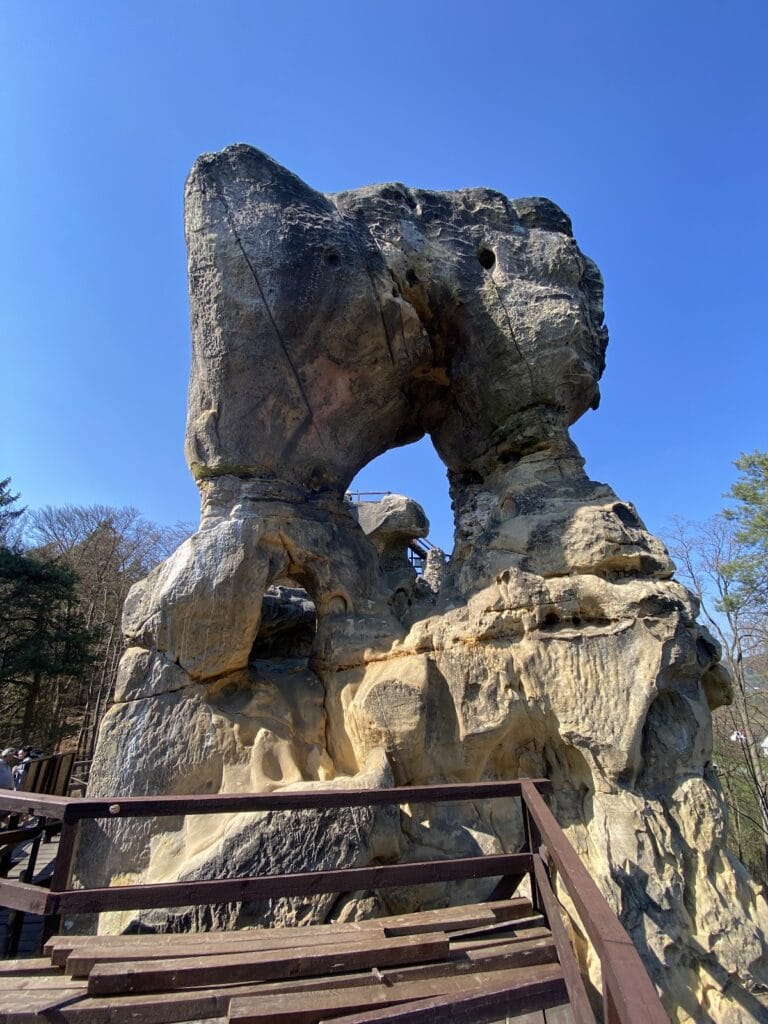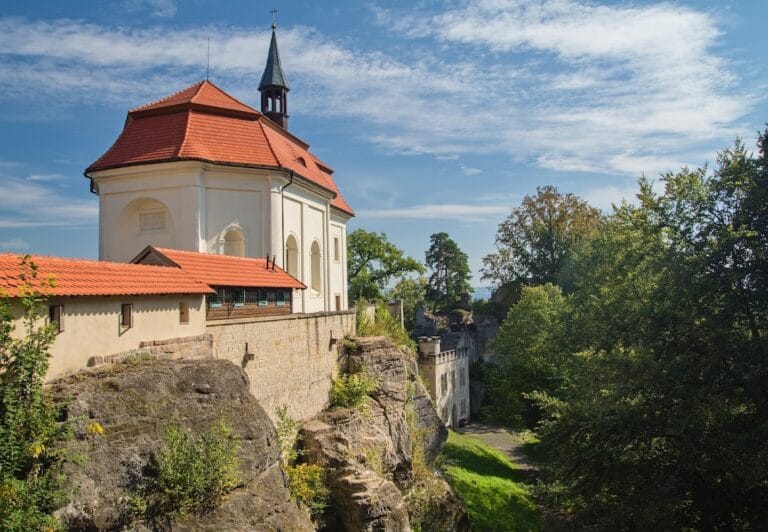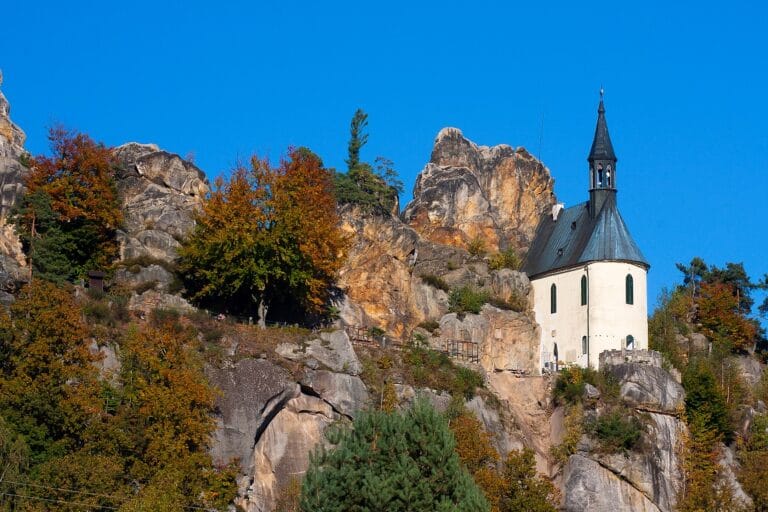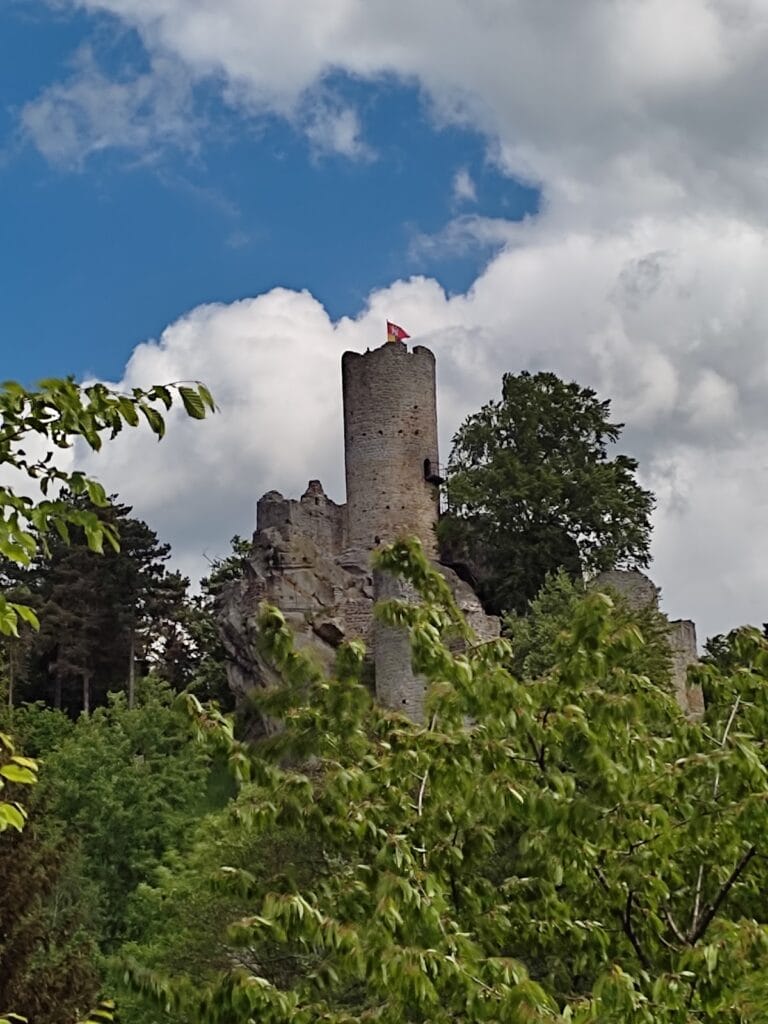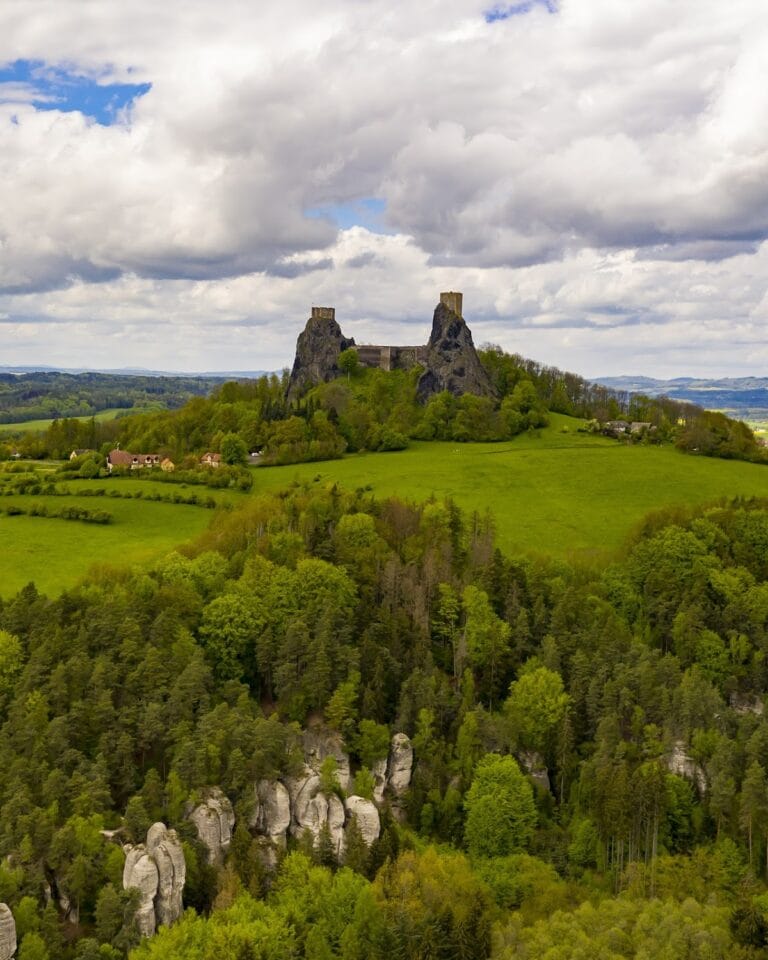Rotštejn Castle: A Medieval Rock Fortress in the Czech Republic
Visitor Information
Google Rating: 4.7
Popularity: Medium
Google Maps: View on Google Maps
Official Website: www.hradrotstejn.info
Country: Czechia
Civilization: Medieval European
Remains: Military
History
Rotštejn Castle is located near the village of Rotštejn-Turnov in the Czech Republic. It was established by members of the noble Markvartic family during the mid-13th century, making it a product of medieval Bohemian society. The castle’s origins trace back to just after the year 1250, when Jaroslav of Hrutwice, a prominent nobleman, built the fortress for his son Vok of Rotštejn. This construction reflects the regional trend of rock castles, where natural sandstone formations were incorporated into defensive structures. Jaroslav’s other son, Zdeněk, founded the nearby Valdštejn Castle and established the Waldstein family, linking the two sites through family heritage.
In the early 14th century, the castle remained under the control of the Rotštejn family, with Vok II noted as its owner. This period was marked by local conflicts, as the castle and its surrounding estates suffered repeated raids by regional nobles. Tensions escalated significantly in 1318, when a large coalition of 152 nobles launched a violent attack that inflicted considerable damage on the castle and its lands. Despite this turmoil, the Rotštejn lineage maintained control of the site through at least the mid-14th century. By 1360, Ješek of Rotštejn held the castle and secured from Emperor Charles IV the right to hold weekly markets in the nearby village of Klokočí, an economic privilege that underlines the castle’s role in local administration and commerce.
The castle’s direct connection to the Rotštejn family ended in 1415, after which ownership passed to Ondřej or Vaněk Paldra of Vařin. This transition took place against the backdrop of the Hussite Wars, a series of religious and political conflicts in Bohemia. Records differ on the castle’s fate during this turbulent time. Some accounts suggest it was either burned or captured by Hussite forces around 1426, but Vaněk reportedly found the fortress still usable after 1430 and chose to reside nearby in the village of Klokočí. This suggests that while the castle may have suffered damage, it was not fully destroyed during the wars.
Over the following century, natural processes contributed to the decline of Rotštejn Castle. The sandstone rock formations integral to the structure gradually eroded, undermining the stability of walls and buildings. By 1514, contemporary accounts described the castle as deserted, with collapsed walls and fallen stones littering the once-enclosed courtyard. This condition was reaffirmed by a 1540 record that noted the site as largely ruined and abandoned. The castle ceased functioning as a noble residence and defensive stronghold.
During the early 1600s and the period of the Thirty Years’ War, local inhabitants took advantage of the newly exposed rock cavities at the base of the former castle to create shelters. Over time, this adaptation evolved into a small village settlement, indicating a shift from a feudal fortress to a more modest, community-oriented use of the site’s natural features. Since 1988, efforts to preserve what remains of Rotštejn Castle have been organized by a voluntary group named “Protection of Klokočské Rocks,” under the leadership of castellan H. T. Hlubučková. These preservation activities aim to maintain the ruins and improve access, ensuring the site’s continued connection to its historical landscape.
Remains
Rotštejn Castle was constructed as a rock castle, meaning that it combined traditional masonry techniques with the natural sandstone formations on which it was built. This combination of carved rock and stone blocks was typical for castles in the region during the medieval period. The castle’s defensive system included elements such as gates, bridges, and bastions, which were integrated into the rock and masonry structures. These features helped protect the stronghold from attack, although their physical forms have largely disappeared over time.
Today, no complete buildings remain on the site; only fragments of stone walls stand alongside the distinctive sandstone rocks that formed the castle’s core. The original layout and form of the castle are known primarily through written descriptions and archaeological interpretation rather than surviving structures. Among the prominent rock formations is one located opposite the accessible area of the castle that once supported the castle’s tower. This rock clearly played a key role in the vertical aspect of the fortress’s defense and observation.
Adjacent to an area thought to have housed a half-timbered guardhouse, there is a notable rock with a natural window or opening carved by erosion. This feature would have provided a vantage point and possibly light or ventilation to the structures around it. Although all wooden components of the castle, such as the guardhouse itself, have vanished, these rock formations give insight into the castle’s original spatial organization.
Since preservation efforts began in 1988, wooden walkways and paths have been installed to make it possible to reach the summit of the castle area safely. These interventions do not alter the ruins themselves but rather facilitate movement around the site while protecting its fragile natural and historical elements. The place now also serves an educational purpose, functioning as a small center for understanding environmental and ecological topics related to the Klokočské rocks nature reserve where the castle stands.
No archaeological reports mention specific artifacts such as tools, pottery, inscriptions, or floor mosaics. The absence of these findings means that much of what is known about Rotštejn’s appearance and use relies on historical records and the physical traces visible in the sandstone formations. The ruined state of the remains, combined with natural erosion over several centuries, has left the castle primarily as an evocative rock landscape shaped by human endeavor in medieval Bohemia.

